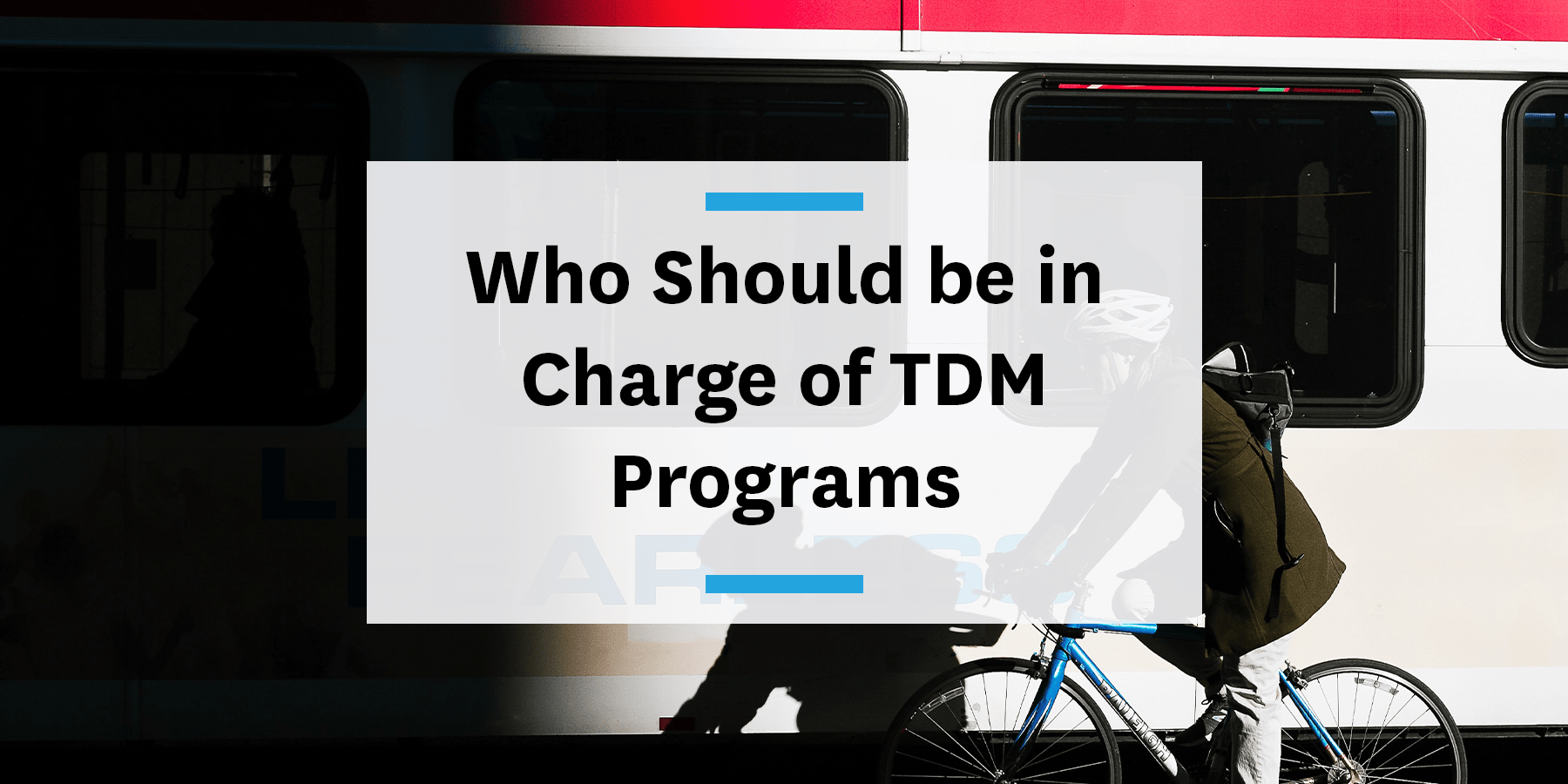When it comes to commuting, HR traditionally takes the lead in designing and implementing benefit programs. This makes sense, as benefit packages are often used as recruiting tools for new hires. But as the world of commuter benefits becomes more competitive and begins to become more integral to an organization’s success, it also leads to the question: “Who is in charge of our transportation demand management strategy?”

Factors including organization size, structure, and outside requirements can make picking a transportation demand management (TDM) point person challenging. While we don’t have the answer for your specific company, we’re here to help you pick the best person for the job.
City TDM mandates
When choosing who should lead your TDM efforts, start by looking at local regulations. For example, Seattle-based employers with 100 or more employees are required to have an Employee Transportation Coordinator (ETC). The purpose of this role is to implement and continue efforts to get employees to adopt alternative forms of commuting. You don’t necessarily need to hire a new person, as long as someone on staff is handling the tasks, but it might be a good idea depending on the size of your company.
Growing your company
The size of your organization should play a big role in the decision-making process due to the number of commutes that need to be managed. The more employees an organization has, the more commutes there are to deal with.
1-100 employees
For companies this size, HR is usually the default because of their close relationship with all employees. When there are fewer commutes to deal with and fewer commuting methods to worry about, helping employees get to work wouldn’t require a full-time employee focused on this alone.
101-500 employees
When the number of employees at your company starts to grow, more commuting methods are inevitable. Once your company reaches 100 or so employees, it’s time to have someone more devoted to helping employees have better, more sustainable commutes. (Yes, we stole that number from Seattle. Why fix what’s not broken?)
This person’s responsibility is more than just figuring out bike parking and providing information about alternative commuting methods. They need to work with the building management (if you don’t own your building) on things like ensuring secure bike parking, while continuously gathering information from employees on usage of and feedback about commuter benefits.
501-1000 employees
Once your company gets to this size, then it’s time to invest in a full-time workplace manager, or maybe even a team. The titles might change from organization to organization, but the functions and responsibilities are usually consistent. When organizations have hundreds or thousands of employees, more efforts need to be made to make sure drive-alone rates are as low as possible.
To help employees ditch their cars, workplace teams help operate shuttle services, make sure there is enough bike parking for cyclists, and in some cases, help employees find housing close to work.
Not only are the way employees are commuting taken into consideration at this point, but the facilities team for your building needs to be involved. This means making sure showers are available for cyclists, real-time transit information (ahem) is available for shuttles and transit options, and even bike repair stations if you have a lot of cyclists.
1000+ employees
This is where TDM, mobility, commute specialists, and office facilities join forces. Having more than 1000 employees means all hands need to be on deck, especially from the workplace team (you’d better have a full team at this size). A lot of the same suggestions from the section above still apply, just on a slightly larger scale. You may also have more than one office at this stage of a company, in which case we HIGHLY recommend you read the next section.
Multiple office locations
While the number of employees is the most significant factor of who is in charge of TDM efforts, the number of offices is right there with it. If you don’t have more than one office, you can skip to the next section. When your company has offices in more than one city, each office might need a dedicated workplace person who really understands the intricacies of local policy and mobility options.
For example, even though Denver is a growing city, the same transit and mobility options aren’t as widely available as in Washington, DC, which has one of the most robust metro systems in the country. With this many people involved, managing a suite of benefits options can get extremely complex, especially if it’s across multiple cities — or even multiple countries.
Company-wide effort
The majority of workplace and TDM efforts may rest on one person or team, but it needs to be a complete, company-wide effort, down to the individual commuter. Transportation demand management is a continuous process, with the goal of always improving the commuting experience. If more employees begin to take the shuttle, it might be time to add another one. If more employees begin biking to work, it might be time to add more secure bike parking. TDM is as much about communication as it is about the strategies being implemented. Every level of the company needs to be involved and active in the process.
Job titles
As a company that works with many professionals in the TDM, commuting, and workplace ecosystem, we’ve come across different titles that handle these efforts. Below is our list.
Corporate transportation professionals
Global Commute Manager
Transportation Program Coordinator
Workplace + facilities professionals
Director, Global Workplace & Facilities
Head of Global Real Estate and Workplace
Director of Facilities
Director of Workplace Operations




